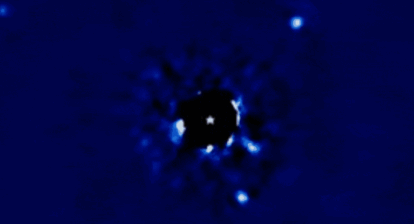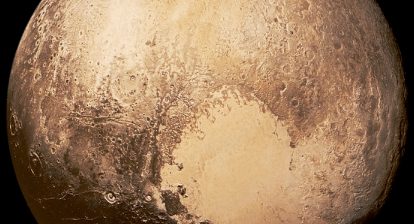Astronomers say they have found a planet in another galaxy, 31 million light-years away! While 4,800 exoplanets (those that orbit stars other than our Sun) have been found in our own Milky Way Galaxy, this is the first time an extra-galactic planet – or extroplanet – has been found.
The first time the possible evidence of an exoplanet was observed was in 1917 but it was not recognized as such at the time. The very first confirmed detection was in 1992, followed by another one that was previously detected in 1988. All of these were however in the Milky Way. Astronomers knew that planets could also exist outside our Galaxy but is not easy to detect them by using the same methods as are used to detect those within our Galaxy. Other galaxies occupy a very small area of our sky, and the high stellar density makes it difficult to undertake detailed studies of individual stars to detect signatures of planets through the two methods used. These two methods are a) radial velocity measurements (based on the detection of variations in the velocity of the central star, due to the changing direction of the gravitational pull from an unseen exoplanet as it orbits the star) and b) transit detection (as a planet eclipses/transits its host star it will block a portion of the light from the star, which can be detected from Earth and these changes in the star’s brightness are known as the light curve).
Rosanne Di Stefano of the Harvard & Smithsonian Center for Astrophysics and her team chose another method. They studied the behaviour of X-rays emitted by bright extragalactic X-ray sources, where an orbiting planet would temporarily block the X-rays, causing an eclipse. After studying thousands of signals, they report in their study that such an eclipse (or dip) potentially occured in the X-ray binary M51-ULS-1 in the galaxy M51, also known as the Whirlpool Galaxy (X-ray binary are pairs of stars that are so close to each other that one is accreting material from the other, producing X-rays), . They examined a host of other explanations for the dip and determined that the existance of a planet the size of Saturn was the best possible candidate for this phenomenon. Behold! we potentially have an extragalactic planet.

XMM-Newton image of M51-ULS-1 before eclipse. Di Stefano et al., Nat. Astron., 2021

XMM-Newton image of M51-ULS-1 during eclipse. Di Stefano et al., Nat. Astron., 2021

Chandra image. Di Stefano et al., Nat. Astron., 2021
Using observations from the Chandra and XMM-Newton X-ray observatories, the team studied the Whirlpool Galaxy (M51), the Pinwheel Galaxy (M101) and the Sombrero Galaxy (M104). Pouring through the light curves of thousands of X-ray binaries, led them to one that was an excellent potential candidate – the X-ray binary called M51-ULS-1. This binary has a very dense but small object that could be a neutron star and a big hot bright star around which the extroplanet – now dubbed M51-ULS-1b – is orbiting.
According to the paper, “This work demonstrates a new method with the potential to discover planets in a wide range of systems hosting XRSs. Because the most luminous XRSs can be detected in external galaxies, the search for extroplanets, planets in orbits located outside the Milky Way, has now become a realistic and practical enterprise.”
Which means we may be able to find more such extroplanets in the future!






